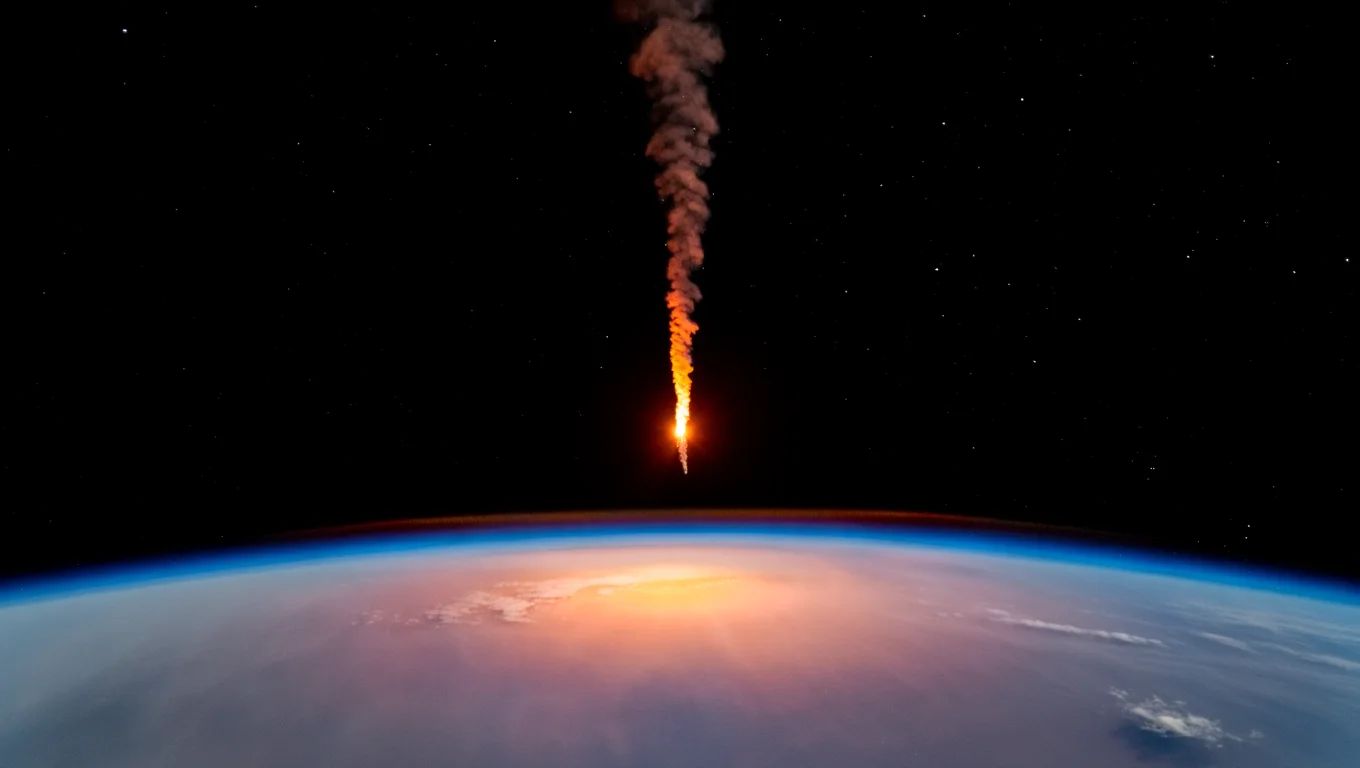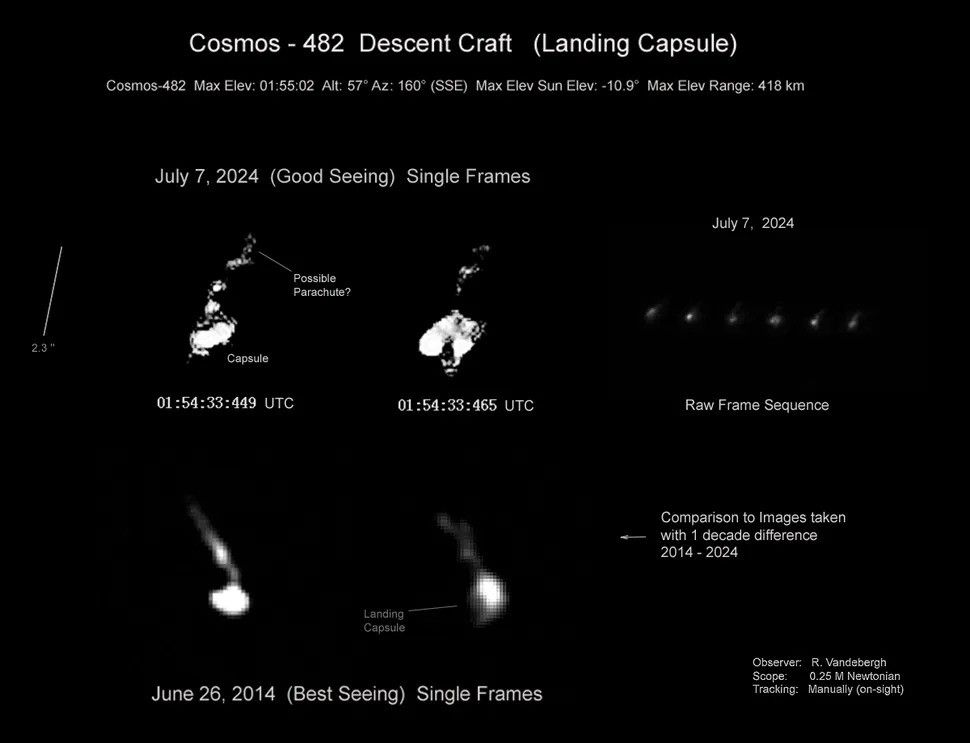A forgotten Soviet probe returns to Earth, followed by a very mysterious object 🛰️
Follow us on Google News (click on ☆)

Recent observations by amateur astronomers have revealed an elongated structure trailing the module. Ralf Vandebergh, a Dutch astronomer, shared images showing this anomaly. Although speculative, the hypothesis of a parachute deployed in space has been suggested.
Designed to withstand Venus's atmosphere, the module weighs nearly 500 kg (1,100 lbs) and measures about one meter (3.3 feet) in diameter. Its robustness suggests it could survive Earth's reentry, unlike the material following it.
Analysis of images taken in 2014 and 2024 shows a similarity in the presence of this elongated structure. Despite this, the high speed of atmospheric reentry makes the parachute's survival unlikely—if that is indeed what it is.
The satellite-tracking community is closely monitoring Kosmos 482's descent. Updates on its trajectory and impact point are expected in the coming days. The event offers a rare opportunity to study the end of life of a historic spacecraft.

Comparison of images of Kosmos 482 taken ten years apart, showing a blurred structure at the rear.
Credit: Ralf Vandebergh
How can a spacecraft remain in orbit for decades?
Spacecraft can remain in orbit for long periods due to the lack of significant friction in space. Unlike Earth's atmosphere, near-space offers little resistance, allowing objects to maintain their speed and trajectory.
Orbital lifespan also depends on altitude. Objects in low Earth orbit eventually fall back to Earth due to residual atmospheric drag, while those in sufficiently high orbits can remain indefinitely—at least on a human timescale.
Gravitational disturbances from the Moon and Sun, as well as solar radiation pressure, can also influence a spacecraft's orbit over the long term. These forces, though weak, can gradually alter an object's trajectory.
Finally, collisions with micrometeorites or space debris can change an orbit or damage the spacecraft, accelerating its return to Earth or leaving it adrift in space.
Parachutes in planetary exploration
Parachutes play a crucial role in slowing down space modules during their descent to a planet. They significantly reduce the spacecraft's speed, preventing a destructive impact with the surface.
On planets like Venus or Mars, where the atmosphere is dense enough, parachutes can be deployed to brake the module before landing. This system is vital for the survival of onboard scientific instruments.
However, deploying a parachute in space, as may be the case with Kosmos 482, is pointless. Without an atmosphere to provide resistance, the parachute cannot fulfill its deceleration function.
The design of space parachutes must account for extreme conditions, such as high temperatures and intense mechanical stress during deployment.